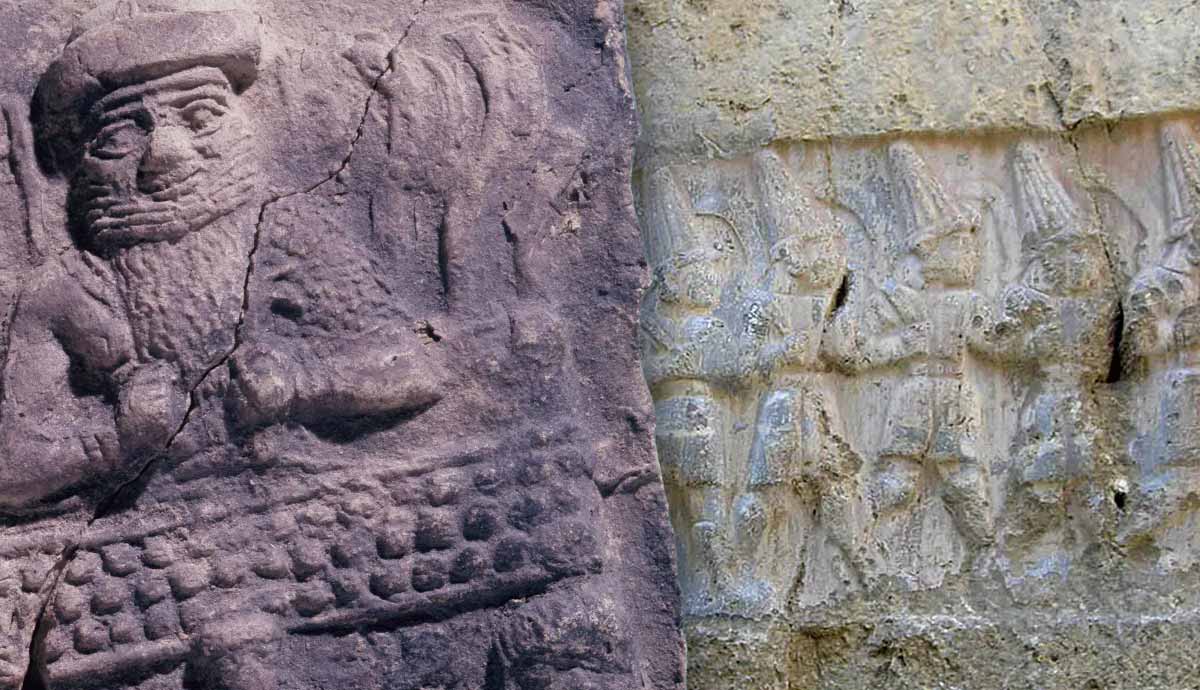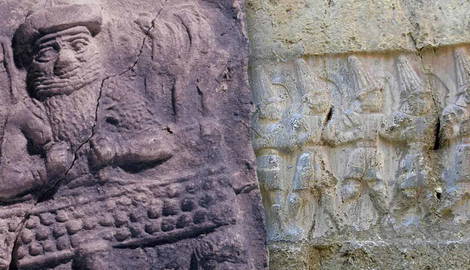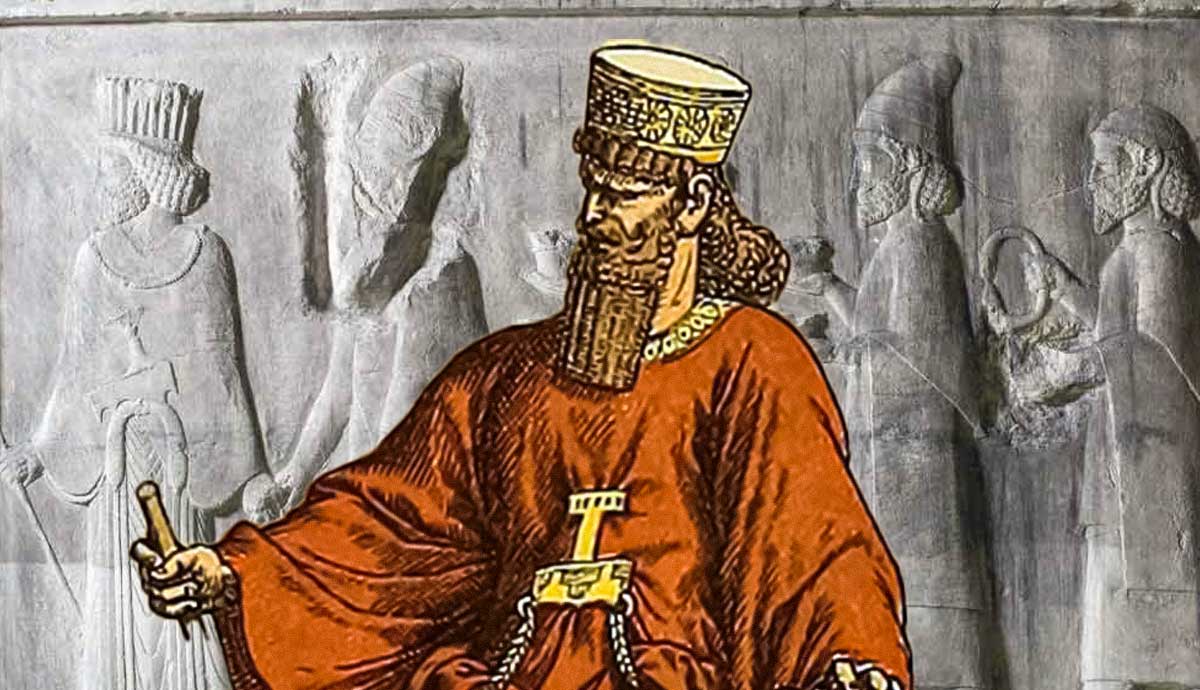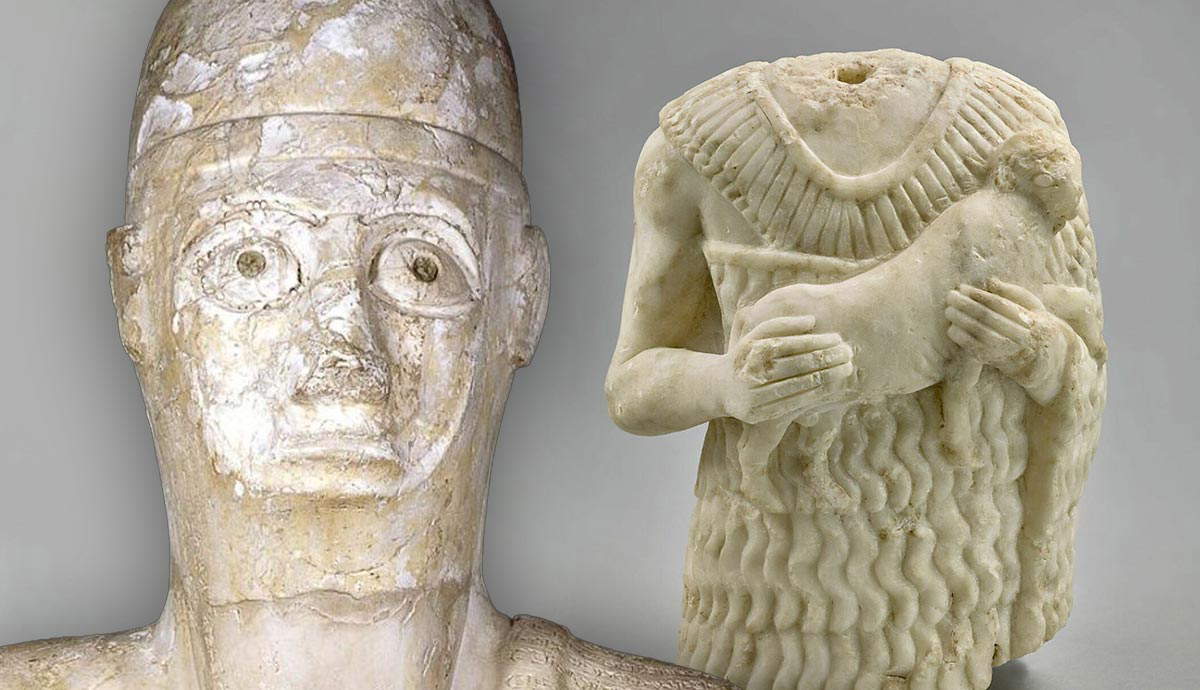
Located in northern Mesopotamia, the enigmatic Mitanni Kingdom influenced the course of ancient Near Eastern history during the Late Bronze Age (c. 1550-1200 BCE). The majority of the Mitanni population was of the Hurrian ethnic group, while the elites were mainly Indo-European, or Indo-Aryan, migrants. After these two groups coalesced, the Mitanni influenced the events of the ancient Near East by engaging in trade, diplomacy, and warfare. Eventually, the Mittani fell to a combination of repeated attacks by its enemies and internal unrest.
Where Was Mitanni?

Scholars believe that the boundaries of the Mitanni Kingdom were indistinct, possibly due to its political configuration. Some scholars believe that Mitanni was more of a confederation or federation of states than a true kingdom. With that said, archaeologists have identified a number of cities that were likely in the Mitanni sphere of direct influence.
During its height of power, Mitanni controlled Alalah, Aleppo, Emar, Taide, and Alshe in the west. In the east, the kingdom extended to include most of Assyria and the city of Nuzi. The northern part of Mitanni was known as “Khurri Land,” which may have been the original Hurrian power center.

There were several cities in the Mitanni kingdom, but three were more important than others. Nuzi was part of the principality of Arrapha, which is what is today northwestern Iraq. The city of Alalah was perhaps the most important in the east, although the status of its membership in the Mitanni Kingdom is unclear. It appears that Alalah was ruled by a local Hurrian dynasty but was a vassal of Mitanni. The capital of the Mitanni Kingdom was the city of Washshuskanni. Archaeologists have not yet identified the location of this truly lost city. Most believe it was located in the middle of the kingdom near the headwaters of the Habur River.
The Hurrians

A people called the Hurrians likely comprised the majority of the population of Mitanni. The Hurrian language is known from a number of different caches of cuneiform tablets, including the Amarna archives in Egypt and the Hittite capital of Hattusa. Although Hurrian was written in cuneiform, like the Semitic language of Akkadian, philologists have identified it as non-Semitic. It is believed that its closest linguistic relative was the ancient Urartian language, but it may have been part of the Caucasian linguistic family. Hurrian was not an Indo-European language.
The Hurrian people were possibly native to an area that stretched from northern Mesopotamia to the Syrian plains. In addition to the cuneiform sources, the Hurrians may have been mentioned in numerous Old Testament passages of the Bible. The Horites are mentioned in Genesis 14:6 as inhabitants of Mount Seir in the land of Edom. There is no non-Biblical written source that attests to the existence of the Hurrians before the Akkadian Empire (c. 2340-2198 BCE). But by the Late Bronze Age, the Hurrians were mentioned by many of the most important peoples of the Near East. The various peoples in Mesopotamia referred to the Hurrians and their land as Hanigalbat, while the Egyptians knew them as Nahrina.

The Hurrian archaeological record can be traced back to the late third millennium BCE. The city of Urkesh in northeastern Syria was a vibrant Hurrian trade center that was home to as many as 20,000 people. Later, in the early second millennium, the kingdoms of Urshu and Hashshu in northern Syria were ruled by Hurrian kings. These kingdoms were not completely Hurrian and it appears that throughout their history the Hurrians routinely ruled or were ruled over by non-Hurrian peoples.
The Indo-Aryan Mitanni

In addition to the Hurrians, the other major Mitanni ethnic group was descended from Indo-European migrants, or more specifically, Indo-Aryans. The theory is that when the Indo-Europeans left their homeland somewhere on the Steppe north of the Caucus Mountains, they moved in waves from around 4000 BCE. Most Indo-Europeans went west into Europe, but some, including the Anatolian speakers, went west and then south. Others, including the Aryans, went east before moving south into northern India in the mid-2nd millennium BCE. By about 1500 BCE, a small group of those Indo-Aryans then moved west into northern Mesopotamia. It is unknown why the Indo-Aryans went there, but one credible argument is that they were hired by a Hurrian king as mercenaries.
The Indo-Aryan theory is based on linguistic evidence. Although all Mitanni-era texts were primarily written in Hurrian cuneiform, traces of the Vedic language, the language of the ancient Aryans, have been identified in Mitanni. The throne names of the Mitanni kings appear to be Vedic or Vedic-influenced. For example, Tushratta (ruled c. 1358-1335 BCE) is likely a translation of “Tvesa-Ratha,” which means “having an attacking chariot.” Likewise, Shaushtatar (ruled c. 15th century BCE) is linked to the Vedic name “Savatar,” which means warrior.

Textual evidence includes the “Shattiwaza Treaty,” which was named for the Mittanni King Shattiwaza (reigned c. 1330s BCE). The Hittite king, Suppiluliuma I (ruled c. 1350-1322 BCE), forced the Mittani king to sign the treaty of vassaldom after the former led a major military campaign into Mitanni territory. As with most Late Bronze Age treaties, the names of the gods were invoked to seal the oath. Hittite, Semitic, and Hurrian gods were all listed, but so too were four Vedic gods: Mitra, Uruwan, Indar, and Nassatiyna. Those four gods are Mitanni/Hurrian versions of Mitra, Varuna, Indra, and Nasatya.
If the Indo-Aryans migrated to Mitanni as mercenaries, it is unknown how they became rulers. They may have married into the Hurrian elite, or they may have taken power forcefully. What is known is that by the mid-15th century BCE, the two ethnic groups had melded and made Mitanni into one of the most powerful kingdoms in the ancient Near East.
Bronze Age Geopolitics

The Mitanni Kingdom made its greatest impact on the Late Bronze Age Near East in the realm of geopolitics. During this era, the greatest kingdoms of the Near East created a system that modern scholars have termed the “Great Powers Club.” The members of this club included Egypt, Kassite Babylon, Hatti (Hittites), Alashiya (Cyprus), Mitanni, and later, Assyria. The major members of this system engaged each other in trade, diplomacy, and occasionally war, although major wars were rare during this era.

During the reign of Shaushtatar (c. mid-1400s BCE), Mitanni conflicted with the Hittites over their northern border, particularly the smaller vassal states of Kizzuwadna and Ugarit. Mitanni added both states to their realm and destroyed the Assyrian city of Ashur, making them the most dominant force in northern Mesopotamia by about 1400 BCE. It was also during this time that Mitanni began direct relations with Egypt.
Although the Egyptians under Thutmose III (reigned c. 1479-1425 BCE) initially clashed with Mitanni over colonies in the northern Levant, the states eventually became allies. By the late 1400s, both states began to view the Hittites as a greater threat. As a result, during the reigns of Amenhotep II of Egypt (c. 1427-1400 BCE) and Artatama I of Mitanni (c. late 1400s BCE), the two kingdoms entered into a permanent peace treaty.

The relative peace and prosperity that Mitanni enjoyed in the late 1400s came to an end in the mid-1300s due to internal problems and external pressures. Tushratta (reigned mid-1300s BCE) came to the throne after his brother was murdered. Tushratta’s brother, Artatama II, briefly ruled simultaneously with a pro-Hittite rival. Artatama’s son, Shuttarana III (ruled mid-1300s BCE), then came to the throne, possibly after having Tushratta assassinated.
As these internal problems were taking place, the Hittites, the upstart Assyrians, and numerous other local kingdoms within the Mitanni state looked to take advantage. The vassal state of Amurru in the northern Levant saw the instability as a sign to conduct its own war during Tushratta’s rule. Amurru apparently tried to break free of Mitanni rule and expand its own borders at the expense of Byblos, which was also a Mitanni vassal at the time. Tushratta was apparently too weak to respond independently, so he asked Egypt for assistance. The request is documented in the Amarna Letter, known as EA 95.

“The king of Mitta[ni] visited the land of Amurru itself, and he said, ‘How great is this land! Your land is extensive. May the [kin]g of Egypt [sen]d me his commissioner that he may take it for him. [Mor]eover, come yourself with all speed, and t[ake] everything. Then return to get the archer[s] later on.’”
The Collapse of Mitanni

As the Mitanni kings struggled to keep stability within their empire, the Hittites and Assyrians were ready to strike from the north and east. Suppiluliuma embarked on two military campaigns south into Mitanni territory. In the first campaign, Suppiluliuma led the Hittite army south of the Taurus River and attacked the Mitanni state of Nuhashshe. Although the Hittites were initially victorious, Tushratta and his Mitanni forces were able to hold them off. Undeterred, Suppiluliuma launched an even bigger campaign in 1377 BCE that resulted in the destruction of the Mitanni capital of Washshukanni. Artatama II was able to regain some of Mitanni’s lost territory, but Mitanni’s territory was consistently being absorbed into the Hittite and Assyrian empires.
When Shattiwaza (reigned late 1300s BCE) became the king of Mitanni, the situation was dire for the kingdom. Unable to protect themselves from enemies on multiple fronts, Shattiwaza accepted vassal status from their old rivals the Hittites. This temporarily protected them from the northern flank, but not their east.

The Assyrian King Ashur-ubalit (ruled c. 1363-1328) began the process of severing eastern Mitanni—Assyria—from the rest of the kingdom. It was also during Ashur-ubalit’s rule that Assyria replaced Mitanni as one of the Great Powers, as recorded in the Amarna Letters. The final conquest of Mitanni was conducted by Adad-nirari I (reigned c. 1305-1274 BCE), who referred to Mitanni as “Shubari” in Assyrian texts. The name was a general Mesopotamian designation for any people from the north.
The final insult to Mitanni came during the rule of the Assyrian king Shalmaneser I (1272-1244 BCE). Mitanni tried to reassert its independence, which was too much for Shalmaneser, or any Assyrian ruler for that matter, so he wiped it out. The Hittites and Assyrians were then neighbors until the end of the Bronze Age, leaving Mitanni as a forgotten kingdom until the modern era.







